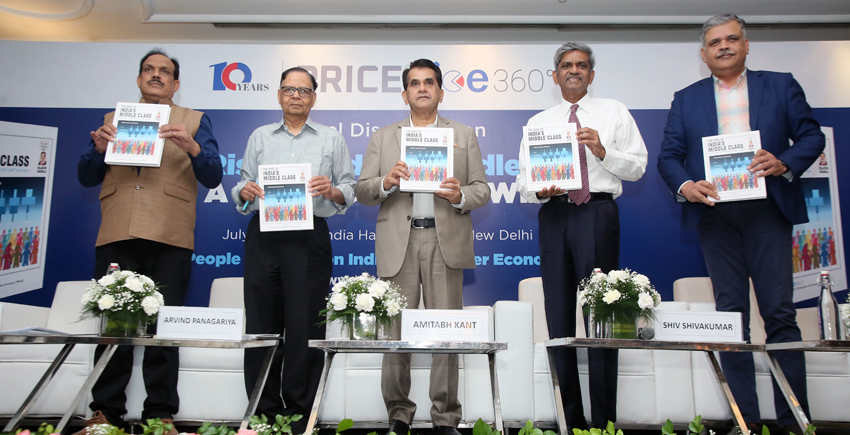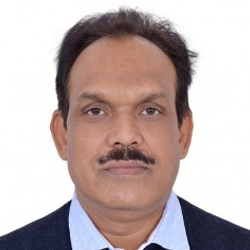
The Rise of India's Middle Class: A Force to Reckon With
Excerpts from Introductory Remarks on the release of PRICE's report "The Rise of India's Middle Class"

There has been a surge of interest in the Indian middle class in recent years, but there is little agreement on who they are or how numerous they are. The size of the middle class, the characteristics of its members, and their roles depend on how we define them. Those in the middle class are indeed often defined by their income or consumption levels. In most countries, household surveys only collect information on one of these, and they are often treated interchangeably, although they should not be.
This report moves beyond thinking about Indians simply in terms of the poor-non-poor divide and instead begins to consider the pathways toward the middle class. This report is a companion report to the earlier one as it examines what happens once households have moved out of poverty and vulnerability. It takes a more nuanced look at the detailed income distribution in India.
We define the middle class as those who enjoy economic security. This means they are free from worry about monetary poverty and, as a consequence, are using their disposable income for discretionary consumption rather than subsistence. One definition of the middle class is that it comprises those whose income level is sufficient to allow them to enjoy economic security and who are safe from falling back into poverty or vulnerability.
This has several advantages. First, it is conceptually grounded in the notion of economic security. Second, what counts as economic security has been developed in the Indian context, rather than by using global benchmarks that may be less relevant. Third, it allows behaviors and characteristics of the middle class to be explored empirically, rather than being pre-determined to define its members, as behavioral definitions do.
The major findings/Takeaways
- The middle class is the fastest-growing major segment of the Indian population in both percentage and absolute terms, rising at 6.3 percent per year and 338 million between 1995 and 2021. It now represents 31 percent of the population and is expected to be 38 percent by 2031 and 60 percent in 2047.
- By 2030, India will add about 75 million middle-class and 25 million rich households, the total share of these segments will be 56 percent.
- Poverty elimination is becoming a reality. Income growth will have an even more positive aspect as India will lift nearly 25 million households out of poverty; only about 6 percent of households will be categorised as destitute by 2031, down from 15 percent today.
- Growth in income will transform India from an aspirers-led economy to a truly middle-class driven one -- growing from $2.2T in 2021 to $7.1T in 2031 -- and consumer spending rising from $1.9 trillion to nearly $5.2 trillion by 2031.
- Rising incomes and the expansion of middle-class and high-income segments will reshape future consumption. The middle class will drive 55 percent of the incremental consumption. Middle-class and rich households will drive nearly $2.7 trillion of incremental consumption spend by 2030-31.
- Many Indias will drive consumption growth and the urban-rural divide will diminish significantly. Rural India will drive 55 percent of the incremental consumption in 2031.
- States’ income level determines the types of jobs and quantum of earnings. While Maharashtra and Delhi have a high concentration of rich households, the growth rate of such households is much faster in states like Uttar Pradesh, West Bengal, and Andhra Pradesh.
- Urbanisation is key to prosperity. Mumbai and Delhi have a high concentration of rich households, but rich households are growing at a more hectic pace in boom towns such as Surat, Bangalore, Ahmedabad, and Pune.
- Metros, boom towns and most significantly ‘developed’ rural (+8-10 percent) will gradually increase their share of India’s income and consumption.
Income classes
Destitutes: Those earning less than Rs. 125,000 per household per annum or around Rs 84 per person per day (US$ 3.29 per person per day in 2021 PPP-adjusted terms).
Aspirers: Those no longer living in poverty but are not yet economically secure, earning Rs. 125,000 to Rs. 500,000 per household per annum or between Rs. 84 and Rs. 298 per person per day (US$ 3.29-12.60 per person per day in 2021 PPP-adjusted terms).
Middle Class: Economically secure households with little chance of falling into poverty or vulnerability, earning Rs. 500,000 to Rs. 3,000,000 per household per annum or between Rs. 298 and Rs. 1,770 per person per day (US$ 12.60-76.16 per person per day in 2021 PPP-adjusted terms).
Rich: The wealthiest Indians who earn more than Rs. 3,000,000 per household per annum or Rs. 1,770 per person per day (>US$76.16 per person per day in 2021 PPP-adjusted terms).



